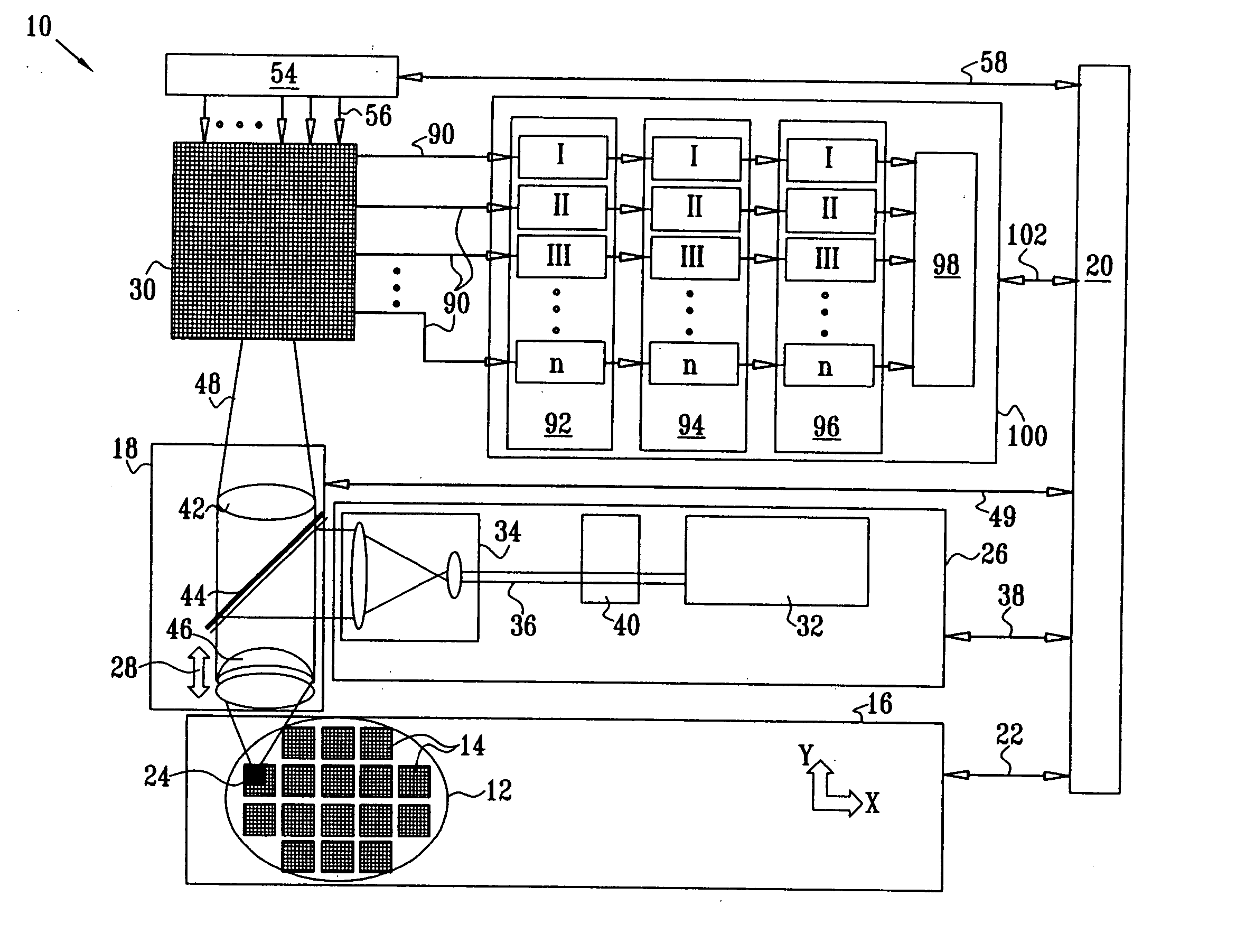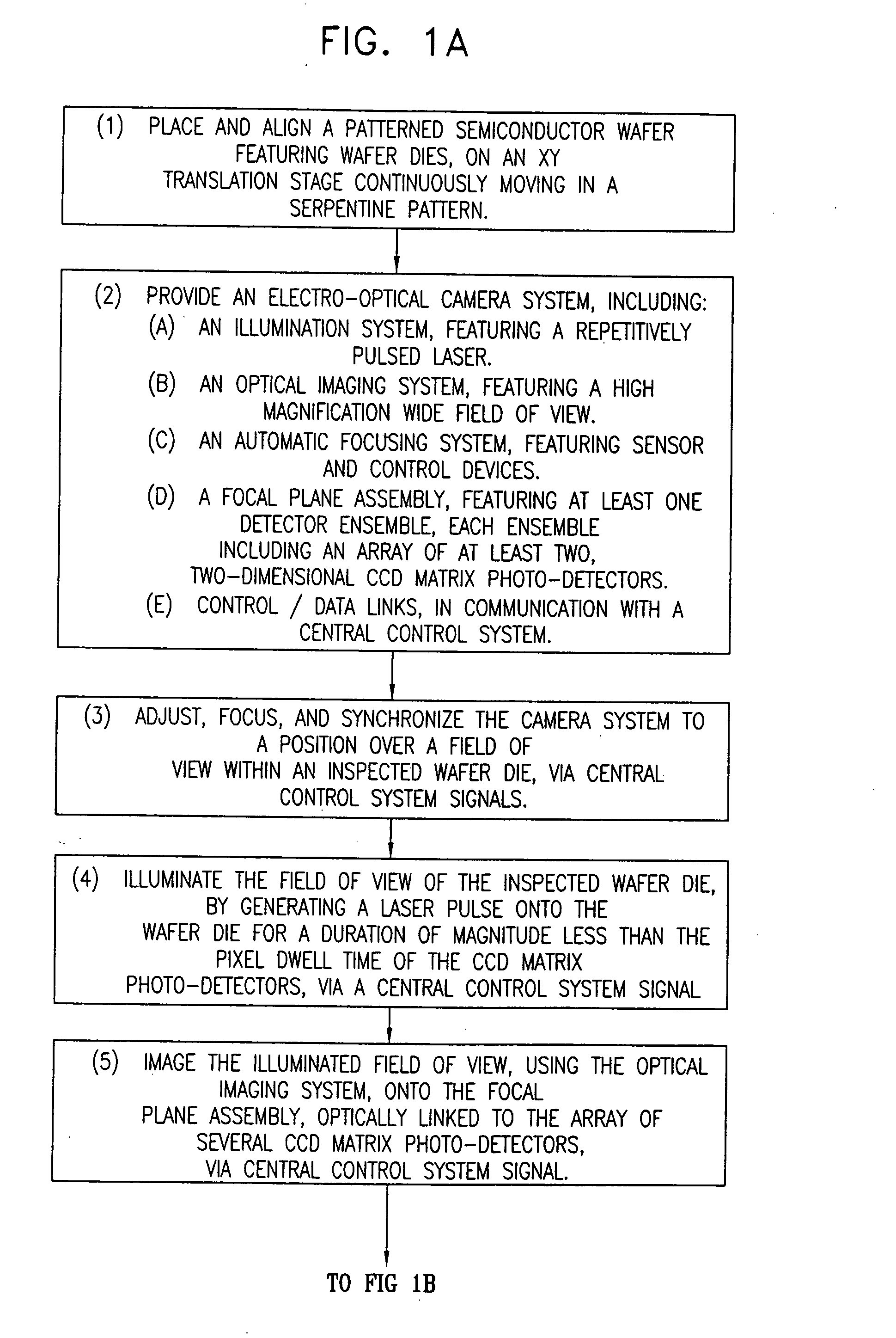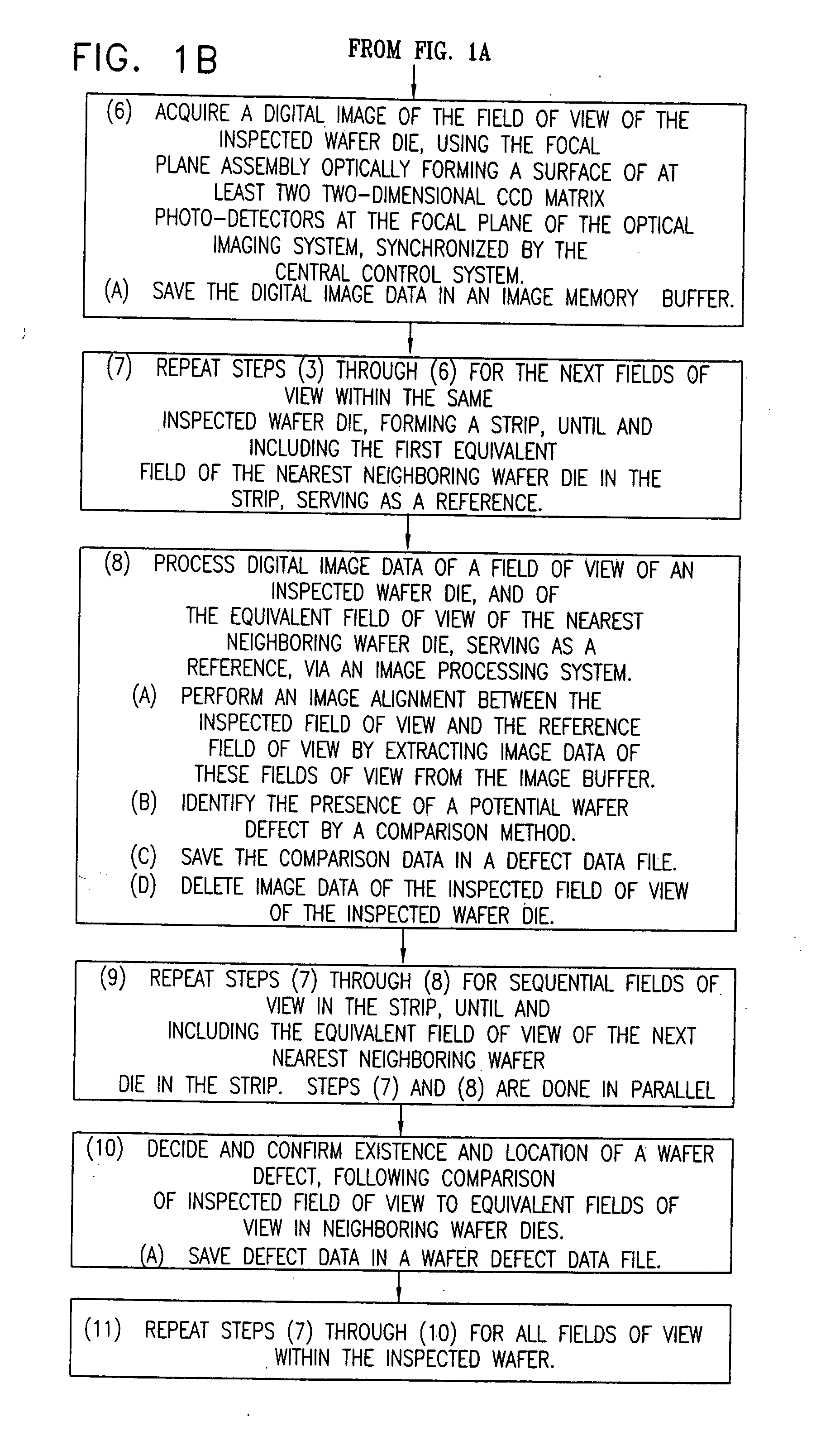System for detection of wafer defects
a technology of optical inspection and wafer, applied in the direction of electromagnetic transmission, instruments, transmission, etc., can solve the problems of reducing wafer throughput, affecting the transmission efficiency of the system, and affecting the detection efficiency of the system. , to achieve the effect of reducing the transmission loss
- Summary
- Abstract
- Description
- Claims
- Application Information
AI Technical Summary
Benefits of technology
Problems solved by technology
Method used
Image
Examples
Embodiment Construction
[0126] The present invention provides a method and system for fast on-line electro-optical detection of wafer defects.
[0127] The method and system for fast on-line electro-optical detection of wafer defects of the present invention introduces the unique combination of a new imaging system featuring an optically formed surface of photo-detectors at the focal plane formed from an array of several two-dimensional matrix photo-detectors for acquiring a high resolution, high pixel density, large field of view image of a wafer die, synchronized with an illumination system featuring illumination of the wafer die by a short light pulse from a repetitively pulsed laser. The laser light pulse duration is significantly shorter than the image pixel dwell time, where the pixel dwell time refers to the time a point on the wafer is imaged by a detector pixel while the wafer is moving, and the laser light pulse rate is synchronized with the frame speed of the individual matrix photo-detectors.
[01...
PUM
 Login to View More
Login to View More Abstract
Description
Claims
Application Information
 Login to View More
Login to View More - R&D
- Intellectual Property
- Life Sciences
- Materials
- Tech Scout
- Unparalleled Data Quality
- Higher Quality Content
- 60% Fewer Hallucinations
Browse by: Latest US Patents, China's latest patents, Technical Efficacy Thesaurus, Application Domain, Technology Topic, Popular Technical Reports.
© 2025 PatSnap. All rights reserved.Legal|Privacy policy|Modern Slavery Act Transparency Statement|Sitemap|About US| Contact US: help@patsnap.com



